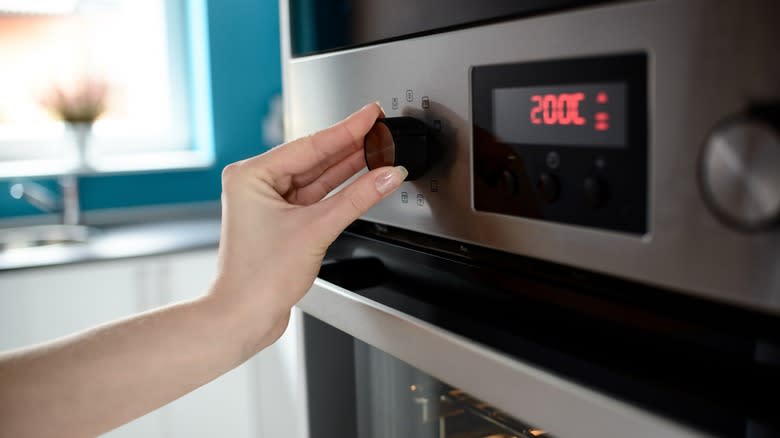The Mistake To Avoid When Using The Warming Setting On Your Oven

The oven stands as a cornerstone in the kitchen, versatile enough for baking, roasting, and, equally important, keeping our food warm until it's ready to be served. The warming feature of an oven is particularly useful, especially during those bustling dinner parties or when juggling the completion times of various dishes. However, amidst this convenience, there lurks a common mistake many of us are prone to make: using non-oven-safe dish ware.
While the warming setting operates at lower temperatures than baking or roasting modes, it still generates enough heat to impact the dishes. The mistake of using non-oven-safe dish ware, ranging from most plastics and specific types of glass and ceramics to Styrofoam and some pans or cooling racks with certain coatings, can have undesirable consequences as these materials can either crack, shatter, melt, or warp.
And this isn't just about keeping your dishes intact; it's also a matter of safety and health. When heated in the oven, some non-oven-safe materials react in harmful ways with the food. For instance, Teflon coatings on metallic items can break down and release harmful gases, while Styrofoam can melt and leach chemicals into the food. The bottom line is simple: Only use dishes made from oven-safe materials, including borosilicate glass, most ceramics, silicone, and metals like stainless steel and cast iron. Before using any dish in the oven, take a moment to inspect it for labels with manufacturer's instructions indicating its suitability for oven use.
Read more: 11 Cleaning Tips For Keeping Your Oven Spotless
Warm Your Food In The Oven Safely And Effectively

To achieve the best results without compromising safety, it's important to follow the correct procedure. Start by setting your oven to the warming mode, which is typically around 170 to 200 degrees Fahrenheit. If your appliance lacks this "keep warm" mode, you can check for a separate warming drawer, or simply set it at 200 degrees.
Next, prepare the food for warming by ensuring it's fully cooked. As emphasized earlier, transfer it into an oven-safe dish. Covering the dish with a lid or aluminum foil can help retain moisture, especially for foods prone to drying out. For crispy delights, e.g., fritters or waffles, arrange them in a single layer on an oven-safe cooling rack placed on a baking sheet. Once the oven is preheated, place your dish on the middle rack to ensure even heat distribution.
You can keep food in the warming setting of the oven for up to one hour, after that, serve the food or store it until ready to serve, at which point you can reheat it. This is because over-warming can dry out or overcook the food. By following these steps, you ensure that your food is warmed evenly and safely while at the same time preserving its texture and flavor. Now dig in.
Read the original article on Tasting Table.

 Yahoo Finance
Yahoo Finance 